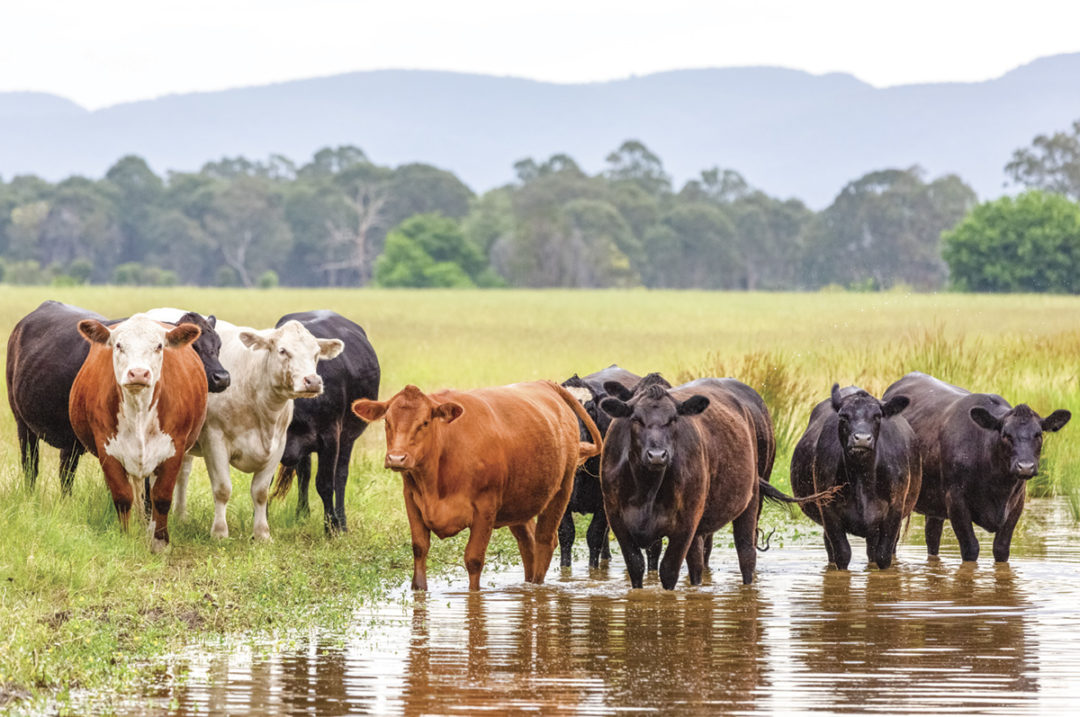With the rising summer temperatures, it’s important to be aware of heat stress risk for animals. Let’s review signs of heat stress and prevention methods for cattle, horses and pets.
Signs of heat stress in cattle
Cattle, of course, do not sweat. Like our dogs, they pant and release heat through their lungs, which are actually pretty small compared to their body size. During this event, cattle can have a respiration rate over 100 breaths per minute. You could see them experiencing a rapid breathing rate and open-mouth panting, an extended neck and slobbering – a lot of slobber. Also, you may see restlessness and distress, decreased movement, bunching and overcrowding near water sources.
Prevention methods:
- Their digestion process produces a lot of heat. Adjust feeding times to feed cattle during the cooler hours of the day, either in the morning or evening hours.
- Provide shade, whether in the form of tree cover out on pasture or shade structures, and ample water.
- Fly control is actually very important in the prevention of heat stress in cattle. Cattle that have a lot of flies on them tend to bunch up. If we can keep the fly pressure down, they won't bunch up as much, helping them keep cool by encouraging air movement from the wind.
- Have proper ventilation and put misters in place.
- Haul cattle during cooler temperatures.
- Supplement cattle with electrolytes to benefit their health and performance.
Signs of heat stress in horses
Signs of heat stress in horses include muscle stiffness, lethargy, stumbling and incoordination. If your horse stops sweating, that's a sign it's getting overheated, and you need to stop exercising your horse and get it cooled down right away. Increased respiration rate is also a sign. Normally it should be eight to 12, up to 18 respirations per minute, so if a horse gets over 50, that's very concerning. If a horse’s temperature is over 102°F, that’s a sign that it's overheating. The normal range is 98°F to 101°F.
Prevention methods:
- Offer continuous access to fresh water and feed electrolytes.
- To help determine if it's safe to exercise your horse, understand the horse heat index. Simply add the day’s temperature in Fahrenheit to the percentage of humidity. So, for example, let's say it's 90ºF outside with 60% humidity. That would be a horse heat index of 150. If you’re in the 120 to 150 range, your horse is OK to exercise. From 150 to 180, there’s a higher risk – light exercise may be allowed, depending on your horse's acclimation and fitness level. If the horse heat index is over 180, avoid exercising your horse.
- Haul horses during the cool early mornings, evenings or overnight, and keep all windows and vents open to get as much air flow through the trailer as you can. Adequate shavings and mats will create a barrier between the hot road and the horse.
- Schedule feeding around a horse’s training schedule. Horses, like cattle, produce a lot of heat through digestion. Feed them three to four hours prior to exercise, or wait at least two hours after exercise to feed your horse.
- Install a fan in each horse’s stall. As an added benefit, moving air from a livestock fan will help keep flies and mosquitoes away.
Signs of heat stress in pets
Dogs suffering from heat stress may demonstrate excessive panting, difficulty breathing, vomiting and diarrhea. More serious and progressive symptoms include lethargy, collapse, stumbling and seizures. When it progresses to this point, it is critical that your dog receive veterinary care. It can be pretty tough to get these cases treated, and every minute matters.
Prevention methods:
- Do not ever leave your dogs in parked cars that are turned off. According to the National Weather Service, in only 25 minutes, a car on a 73ºF day can quickly reach 100ºF. Imagine how dangerously hot it can get inside a car on a 100ºF day. It's the same with small children – please do not leave your dogs or children in parked cars. They can overheat very, very quickly.
- Plan your dog’s play time – or any outdoor activities they may tag along for, such as checking fence – around the cool times of the day. Dogs are not very good at stopping themselves when they get hot, and they'll just run themselves until they are overheated.
- Clip dogs with long hair coats. You can clip any dog that has a long, thick hair coat.
- Avoid walking your dog on hot sidewalks, as this can burn their paws. Place the backside of your hand on that surface, and if you can't hold it on there for seven seconds, then it's too hot for your pet. Protective boots can help them.
I hope this information will help you keep your cattle, horses and dogs safe as we round out the warmest months of the year.









